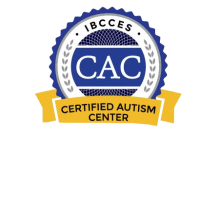Bahrain society for children with behavioral and communication difficulties
Alia for Early Intervention Alia Rehabilitation Center
Alia for Early Intervention
The mission of the Bahrain Society for Children with Behavioral & Communication Difficulties is to promote lifelong access and opportunity for all individuals with behavioral and communication difficulties, and their families, to be fully participating, included members of their community. Education, advocacy at all levels, active public awareness and the promotion of research form the cornerstones of the society’s efforts to carry forth its mission. The membership includes a diverse group of parents, family members, special education teachers, administrators, medical doctors, therapists, nurses and aides, as well as countless other personnel involved in the education, care, treatment and support of individuals with Behavioral and communication difficulties. Recognizing and respecting the diverse range of opinions, needs and desires of this group, the society embraces an overall philosophy which chooses to empower individuals with Behavioral, Communication and related problems, their parents or care-givers, to make choices best suited to the needs of the person with the difficulty. |
I REALIZE THAT SCHOOL CAN HELP ME ACHIVE MY GOALS AND IMPROVE MYLIFE
The Race Autism
At the very core of the parent choice philosophy is the belief that no single program or treatment will benefit all individuals with Behavioral and communication difficulties. Furthermore, the recommendation of what is “best” or “most effective” for a person with such difficulties should be determined by those people directly involved, the individual with behavioral and communication difficulty, to the extent possible, and the parents or family members. Providing information and education to help in decision-making are more highly regarded at the society than is advocating for one particular theory or philosophy. |
Our statement on Early Intervention
The society recognizes the importance of intensive early intervention for young children across the Behavioral & Communication disorders spectrum, including those labeled with pervasive development disorders, Asperger’s syndrome, and other communication or developmental disorders. Since these children may not share a common diagnostic label, each has individual needs. Because of the individual differences among these children, the society supports an individualized approach that addresses the core deficits of behavioral and communication difficulties (e.g., communication, social, sensory, academic difficulties) and that match each family’s preferences and needs. In designing effective programs, the society encourages professionals and family members to consider the following components:
A curriculum which addresses deficit areas, which focuses on long-term outcomes, and which considers the developmental level of each child. Deficit areas include:
Inability to attend to relevant aspects of the environment, to shift attention, and to imitate language and the actions of others
Difficulty in social interactions including appropriate play with toys and others, and symbolic and imaginative play
Difficulty with language comprehension and use, and functional communication.
Effective and systematic instructional approaches which utilize technology associated with applied behavior analysis, including chaining, shaping, discrete trial format, and others.
Programs which capitalize on children's natural tendency to respond to visual structure, routines, schedules, and predictability
Focus on generalization and maintenance of skills, using technology such as incidental teaching approaches.
The society encourages applied research to determine those interventions and approaches which are most effective for all children with behavioral and communication difficulties, and to encourage common usage of these practices for each child with a behavioral and/or communication difficulty, regardless of geographical location.
Use of the technology associated with functional behavioral assessment and positive behavioral supports when involved with a child who presents behavioral challenges.
Family involvement including coordination between home and involved professionals, an in-home training component, and family training and support.


